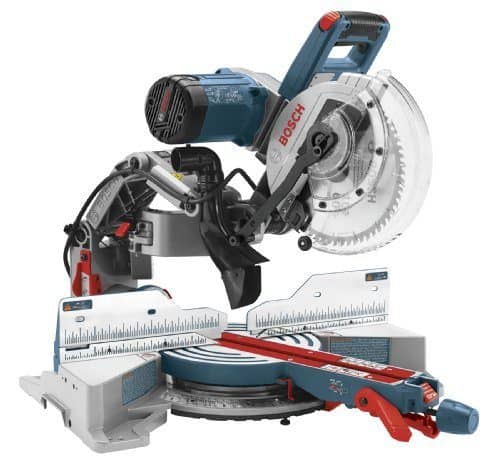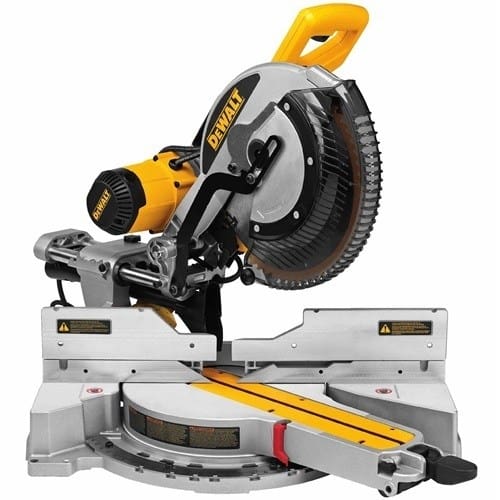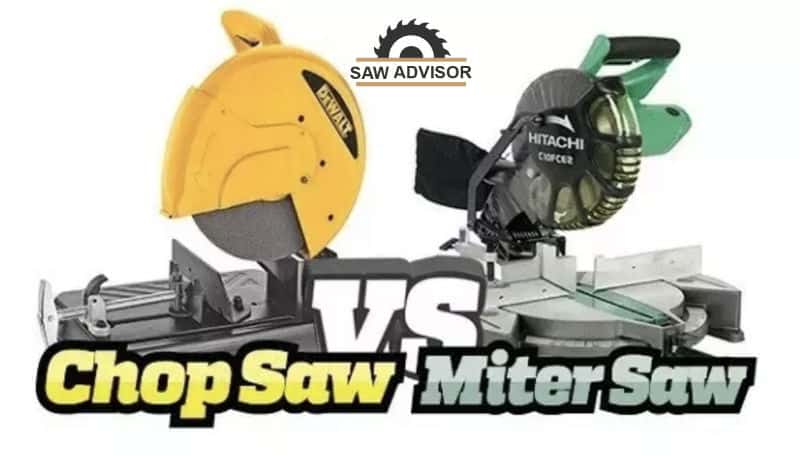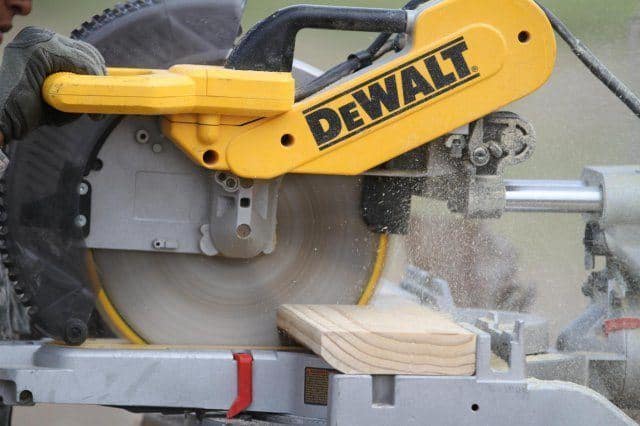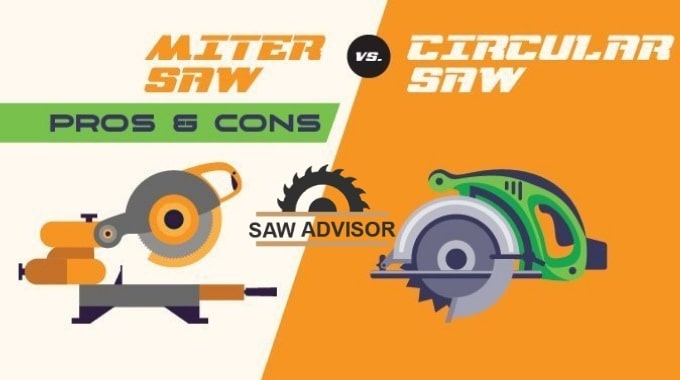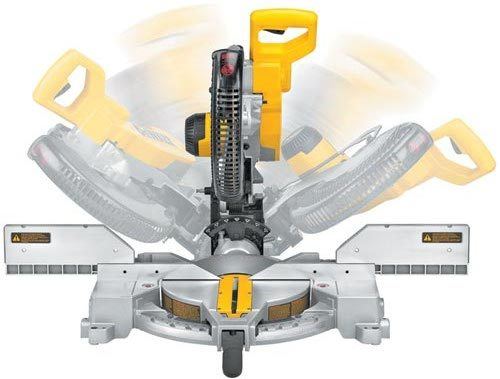- You are here:
- Home »
- Miter Saws »
- 10 Inch and 12 Inch Miter Saw – Which One is better for you?
10 Inch and 12 Inch Miter Saw – Which One is better for you?
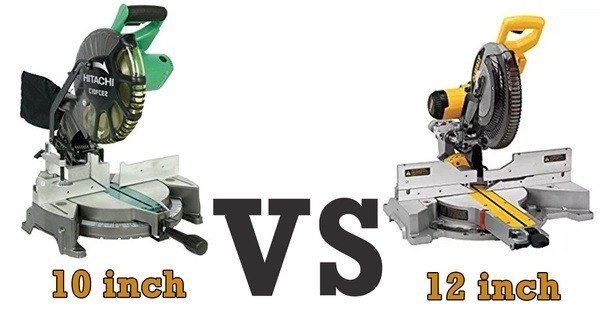
10-Inch vs 12-Inch Miter Saw
10-Inch Miter Saw
10-inch miter saws are very popular. They have generally the default saw size for most woodworking purposes. This size miter saw can cut pieces of wood up to 6-inches wide, which includes most molding and trim boards. You can’t cut a wider board with a 10-inch saw.
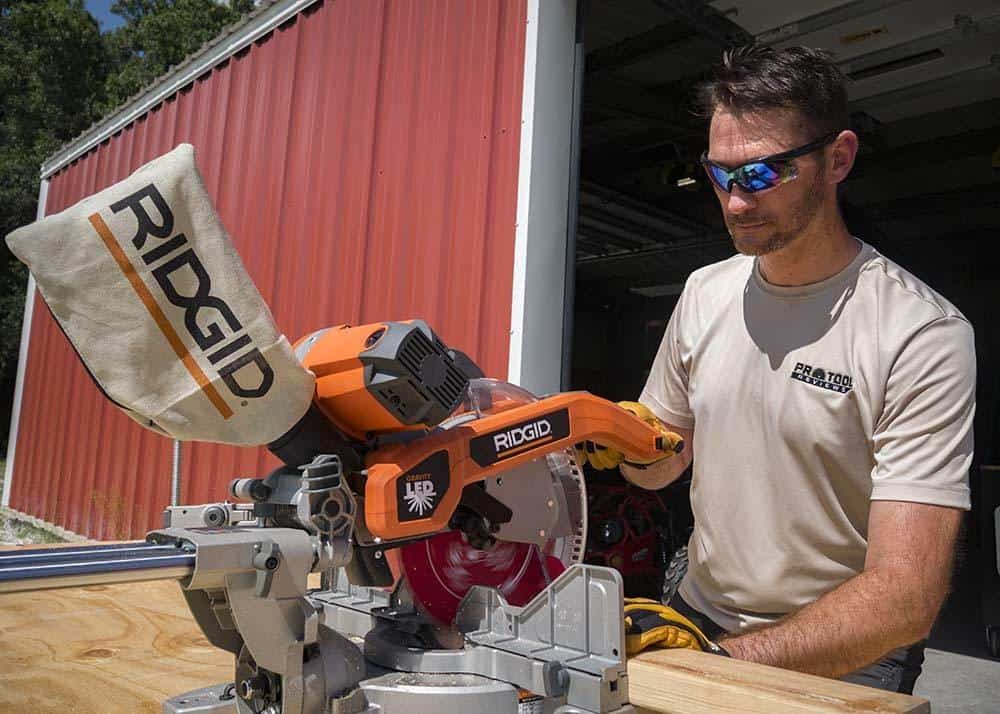
Why You Should Buy a 10-Inch Miter Saw
Firstly, 10-inch miter saws are usually cheaper than 12-inch ones. They are also lighter and smaller, allowing them to fit into small workspaces and be more portable. One of the most important things is the depth of the cut while cutting high moldings such as tall baseboards or large crowns. So you can buy new 10-inch slider saws that have that capability.
10-inch blades are also easier to find because 10-inch miter saws are more popular. You can usually find a 10-inch blade in just about any style for a good price. A 10-inch blade will also spin faster than a 12-inch one. Usually, both size saws have the same size motor, resulting in the smaller, lighter blade spinning faster. This faster speed leads to a finer finish and faster cutting time.
Many 10-inch miter saws are also compatible with table saw blades which means you can grab a blade off of your table saw and use it for your miter saw. If you buy a 10-inch slider it will give you the same cutting capacity as 12 inch and blades are less expensive too.
For obvious reasons, it is also cheaper to have a 10-inch blade sharpened than it is to have a 12-inch blade sharpened. Smaller blades also tend to wobble and deflect less option than larger blades. While this is not typically that big of a problem, it is something to keep in mind.
A good thing about a 10-inch miter saw is you can cut molding up to 12″ when working on a flat table and using the bevel and sliding feature.
The Best Overall 10-Inch Miter Saw
12-Inch Miter Saw
12-inch miter saws are more robust versions of their smaller cousins. Besides their larger blade, they are pretty much exactly the same as a 10-inch miter saw.
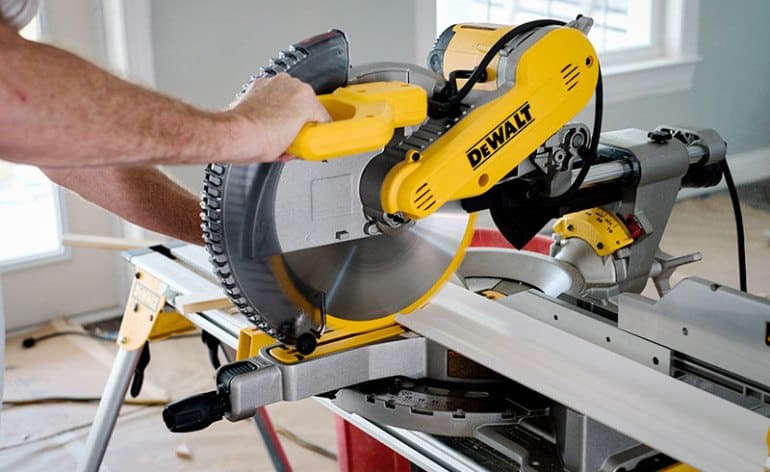
Why You Should Buy a 12-Inch Miter Saw
12-inch miter saws usually host powerful 15-amp motors. This means more power hence you can cut harder materials. Some 12-inch saws are also compatible with 10-inch blades. A 15-amp motor spinning a 10-inch blade creates insanely fine, smooth cuts. Since they’re designed for heavy-duty cutting, 12-inch miter saws are usually more durable and tend to last longer.
A larger saw can also cut through larger pieces of wood. With a 12-inch saw, you’ll be able to cut through 4x6s in just one pass. They’re also ideal for any harder materials like plywood, which tend to come in larger sizes anyway.
The major negative about the 12-inch miter saw is its higher price tag. They’re just larger and more powerful, which can mean steep price increases. The blades are also pricier and cost more to sharpen, leading to less money in your pocket over time.
Main differences between 10-inch vs 12-inch miter saw
| 10-Inch | 12-Inch | |
|---|---|---|
| Use | Mostly molding and trim boards | Heavy-duty cutting |
| Price | Usually cheaper | More expensive |
| Weight | Lighter | heavier |
| Size | Smaller | Bigger |
| Durability | Medium | High |
FAQ’s
Do I need a 10 or 12 inch miter saw?
The selection between 10 or 12 miter saw depends on what type of job you want to complete. If you are looking to cut deeper and wider then a miter saw with a 12-inch or above blade size is enough while a saw with a blade size of 10 inches or below is good for small projects. Even though it is bad for beginners to buy a miter saw with more features but it also comes with some advantages.
Can you use a 10 inch blade on a 12 inch miter saw?
Yes, you can mount a 10″ blade on a 12-inch miter saw but not vice-versa. So I will suggest you to to buy a 12-inch model which can be used for a variety of projects like crown molding or laminate flooring.
What size wood can a 12-inch & 10-inch miter saw cut?
A 10-inch miter saw can cut the wood of 2 x 6 and 2 x 4 at 90 degrees and 45 degrees respectively. The cutting depth of the miter saw depends on its blade size. Bigger the blade size, the deeper and wider it will cut. Even though most saws can cut in both directions from 45 to 90 degrees while there are some exceptions with 55 degrees angle too.
Can a 10 inch miter saw cut a 4×4?
Yes, definitely a 10-inch sliding miter saw can cut 4×4. if you are really buying one we suggest you get a 12-inch. Because it has longer blade life, faster RPM which will give you cleaner cuts. Buy a 10-inch if you want to move it around every day to the worksite.
10 vs 12 Miter Saw – Conclusion
When it comes to purchasing a saw, what DIY projects do you plan on using a saw for (framing, finish carpentry, some cabinetry, and an occasional deck.
For most homeowners, a 10-inch miter saw is probably the right option. They’re cheaper, take up less space, and produce smoother cuts. These saws are also good for those with smaller jobs like cabinet making and smaller trim. You can buy a 10-inch slider that has all the features like dual arbor adjustments, set table angles, motor brake, etc.
12-inch miter saws are a must-have for more ambitious, larger projects, however. They can cut bigger, harder pieces of wood and stand up to regular heavy use. Of course, they also cost more. The disadvantage of the 12-inch miter is its weight and the other con is a deflection of the blade; a 12-inch blade will deflect more, which matters a lot more while cutting for furniture when framing a deck.
Related:
About the Author David Vieria
David has been a woodworker for most of his life — in his dad’s cabinet shop. After using the tools himself, he decided to share it his woodworking and power tools knowledge with DIYers. Read more about him

